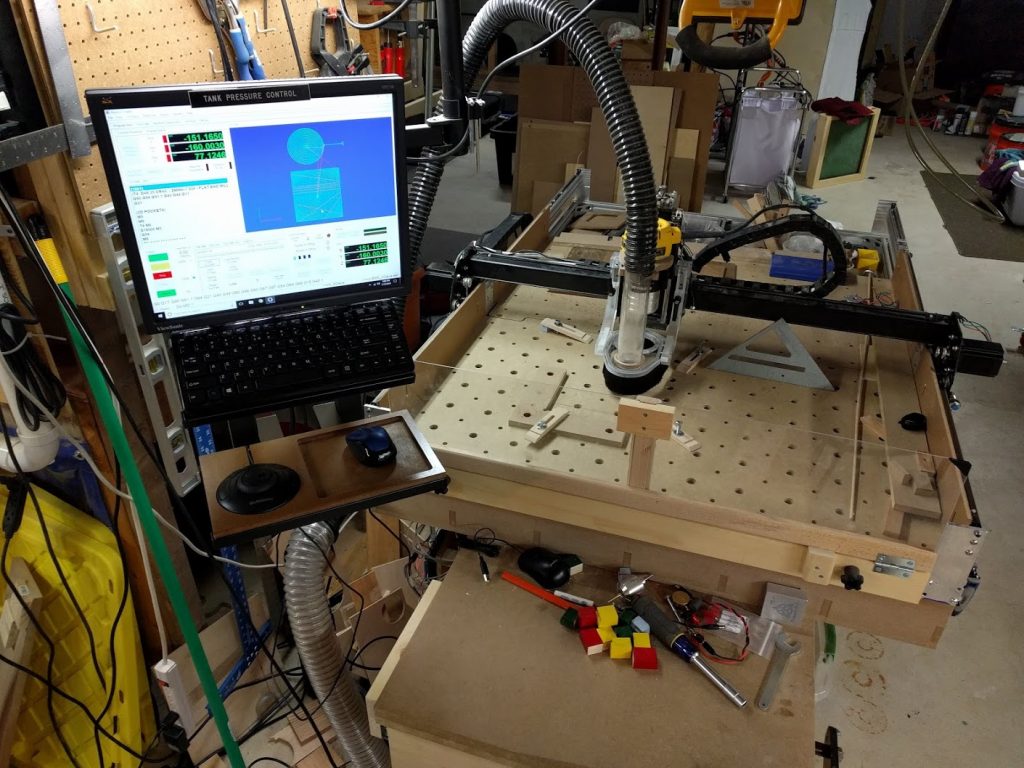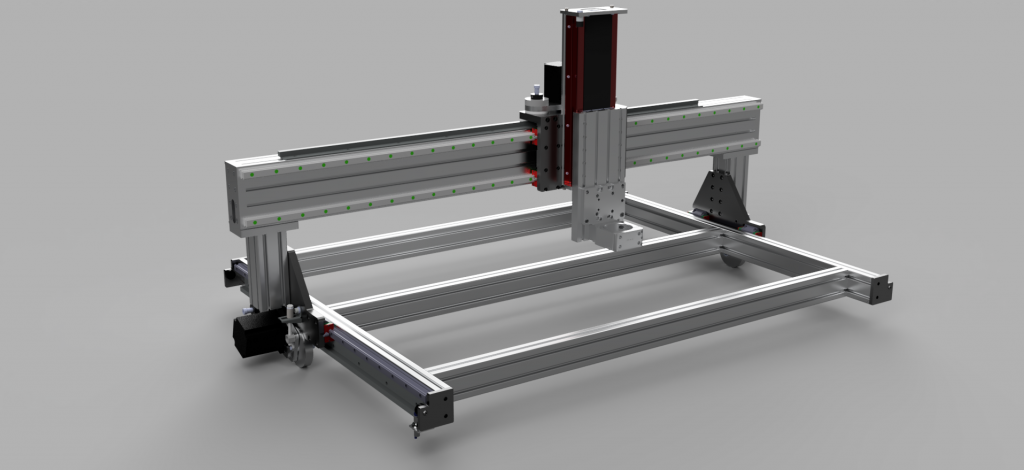The project of building my new, bigger, better CNC router is well underway at this point, so I’ll begin with a recap of how it started.
I started with CNC by building an X-Carve in 2017. I was determined to have a working area large enough for the biggest item I could envision myself reasonably wanting to make that warranted the use of CNC, which at the time was plywood panels for kitchen cabinet carcasses. That pushed me beyond the limits of the machine sizes available in complete kit form, but Inventables offers their makerslide rail up to a length of 1800mm, and they were willing to work with me to buy just the parts I needed to ultimately build a 1000x1500mm machine, without ending up with any unnecessary pieces.
Over the course of about a year, I built, upgraded, and learned a lot. I raised the Y rails and added mid-span supports, put it on a torsion box base, made wasteboards with threaded inserts and dog holes for clamps, upgraded to larger steppers, added dust shields, swapped in a greatly improved Z-axis, upgraded the belts to 9mm 3GT, built a complete dust shoe solution, and switched to GeckoDrive stepper drivers with an Ethernet SmoothStepper and Mach4 for control.

I was able to make a lot of great things with it throughout that time, but I can’t help but strive for continual improvement – to me, the machine itself has been the hobby all along, more so than using it to make things. By that point, however, it was becoming obvious that I was reaching the limits of the basic chassis design of the X-Carve – there’s only just so far you can take it given the size of the X and Y rail extrusions. It’s just physics.
So, I started looking around at the next higher tier of CNC routers on the market. The options in this range are far fewer than you find in the sub-$2k range, so this search very quickly narrowed down to Fineline Automation’s Saturn Series, CNC Router Parts’ Standard Series and also their Pro Series.
Really, all of them look to be very solid machines, but the Saturn Series was initially my first choice. For the money, the welded steel frame is a big deal, and the overall construction appears to be very solid. I was a bit put off, however, that the 4’x4′ model was of the new and improved “Saturn 2” series, with a number of big improvements advertised – but the smaller 2’x4′ model is still the original design. Furthermore, from what I saw on various forums, Fineline seems to have a reputation for long lead times and lack of communication. This was reinforced for me when they never responded to any of my inquiries, despite the fact that I was just about ready to pull the trigger on a machine. For better or worse, that was enough for me to write them off.
It was around that time period when I had the opportunity to get trained and certified on the Tormach PCNC 1100 CNC mill at my local Makerspace, which really opened up my options for fabrication. Looking at the design of the CNCRP Pro Series, it became evident that most of the parts for such a machine were within the capabilities of the machine(s) I now had available to me. I went through the exercise of tabulating the projected material costs to build one – it told me that I could stand to save a bit under $1K relative to the price of their kit. However, I know full well that the unexpected incidental expenses always add up, so by the time all is said and done I am sure it will come out to a wash at best, especially if I place any value at all on my own time. But – that’s not the point. The experience of designing, machining and building such a major project was extremely appealing to me both as a learning experience and as an accomplishment.
Of course, there were also some design details that I was interested in changing. Not very many, mind you – I really found little to no fault in any aspect of the CNCRP machine design. The main thing was that I wanted to be able to clamp stock vertically on the front edge, for doing wood joinery such as box or dovetail joints – this required extending the Y axis out past the front edge of the work area by a few inches, also making it longer overall so as to maintain a full 2’x4′ working area over the wasteboard. Also, less importantly, I wanted to use imperial extrusions rather than metric, so I could get away from having to collect so much metric hardware and tooling. Overall, I just wanted to make it my own, if in subtle ways.
Thus began the long process of designing the machine in Fusion 360. Such a large design was good practice in using the software, and it was all a good exercise in Design for Manufacturing (DFM) since each machined part needed to fit within the ~9″x16″ working volume of the Tormach 1100 that I would be using and be reasonable to machine without requiring an excess of fixtures or other complicated or specialized setups.

And this is where it ended up, more or less:I’ve made some subtle changes to the assembly that didn’t affect the machined parts and therefore I didn’t bother updating the model, but this is pretty close to the final design.
Stay tuned for the next installment, where the build begins…